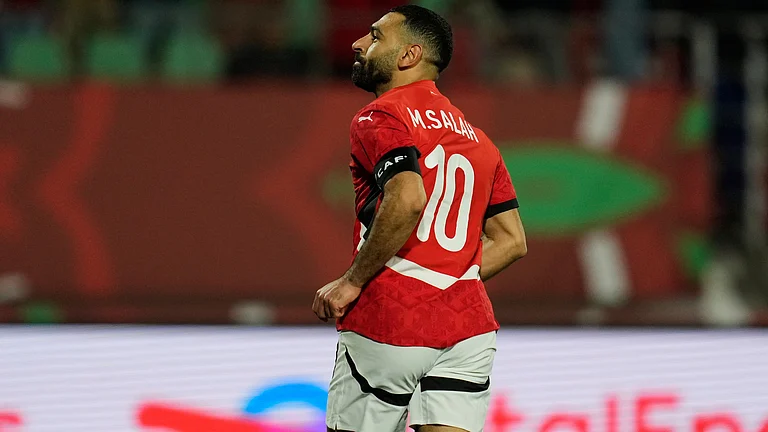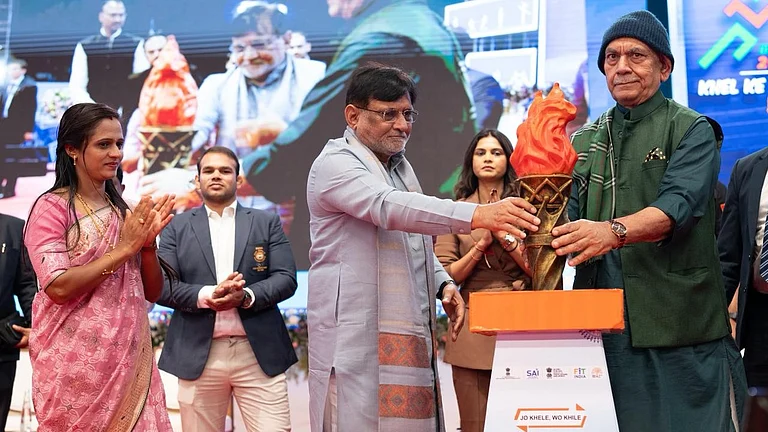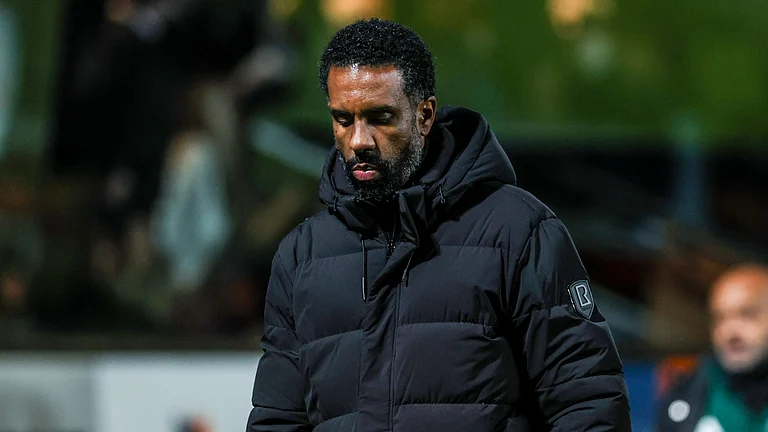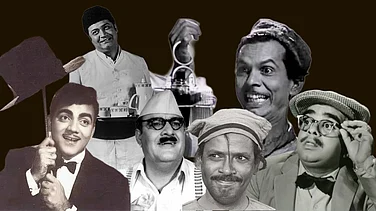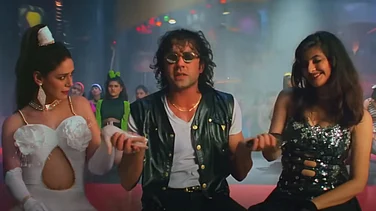The battle draws near and tension grips the air. A plume of dust, the grinding of heavy metal chains, the first tank, more dust. Then another tank grinds past and then abruptly halts. As the dust settles, a long black arm swings past with sharp instructions being relayed on a walkie-talkie. A camera bobs into view. This is probably the first time in the world a gyrastabilised opertee arm has been mounted on a tank.
Ninad Nayampally sits in command at the front of the tank. He wears a Talk Back headset, has a walkie-talkie in one hand and a large digital screen in the other. He smiles as the tank grinds to a halt. The shot was a success. Next, the tank has to submerge itself in water while a camera placidly looks at it from a barge.
It took him and his team two days to mount the tank bodies onto rigs. Nayampally is a ‘key grip,’ a term few film aficionados are familiar with. Grips are technicians who handle cameras and supporting equipment. They rig cameras onto cranes, cars and planes, while also building special rigs to mount picture vehicles that would allow the camera to make complicated manoeuvres, turn on its head and reach where the cameras cannot reach easily. Action films see extensive use of grips and gripping gear.
Rigging is a precision process involving specialised equipment, trained crew and an eagle eye for safety. Yet, historically, Nayampally argues that not many crews in India have employed grips. “Here it has always been looked down upon. People think of a grip as somebody who is not educated: ‘one just has to be able to carry weight like a coolie and become a grip’—that was the whole mentality here.”

When Nayampally started working in the film industry, he was a production manager with Highlight Films, an iconic Mumbai-based production house started by Mahesh Mathai and Srila Chatterjee in 1987. At the time, they largely produced television commercials, and were line producers for foreign commercials and films. He got the chance to work on a film called Mystic India when he met Bobby, the key grip on the set. Fascinated by Bobby’s work, Nayampally started helping Bobby out in his free time. “It’s physically very demanding and also challenging mentally. So…that caught my fancy.” His ample chest and biceps testify to that. By the end of the project, he had found a new calling and told Chatterjee that he wanted to become a grip. She encouraged him to join Zoo Grips, a nascent grips company owned by Highlight Films.
This was back in 2003-04; at the time Zoo Grips had one crane and one dolly. Today, they have 30 times as much gear and nine container trucks to transport it to locations across India. “It’s now that people really understand… or still people don’t know, but they’ll still say, okay, let’s call a grip only for something very difficult,” says Nayampally, with a twinkle in his eye. “There’s always a fine line between getting what you want and getting exactly what you want.” Budgets always weigh in on the decision-making process. “The happy shots are always expensive. It took some time for the DPs and everyone to start discussing shots (with us). Now it’s very serious, we are there sometimes from the beginning of script discussions…it’s really come a long way…now people recognise we can add value.”
Still, in a traditionally hierarchical industry and class-divided society, it isn’t always easy to put forth your views to the director. Nayampally, however, believes education is changing that: “Education gives us the confidence to stand there and talk to people. A lot of grips are not educated and so lack the confidence to talk to directors. There’s a whole thing about not talking in English.” Language becomes important as there are also huge considerations of safety on set, especially when performing stunts and action sequences. “You have to do an ‘idiot check’ on everything, so that also excites me because you’re constantly there.” He pauses, taking a bite of his moist carrot cake, and continuing with a swish of his neat ponytail, “I’ll happily walk up to the director and say it’s not safe, we can’t do it.”
Gripping, unlike DPing, isn’t a set job that comes with stardom or recognition; there are no awards instituted for grips, no red carpets or galas either. Yet they run the invisible machinery that creates magic within the shot. For Nayampally, nothing could be more fulfilling. “Every single day is different and I have to conceptualise it and execute it which is what excites me. It involves everything I like: driving, riding, operating machines and hard, physical labour.”
As we get up to leave, Nayampally flashes me a cheeky grin, “We are the big thing (in films) not the stars.”
(This appeared in the print edition as "Key to a Good Shot")
Avani Batra is an assistant director and actor








